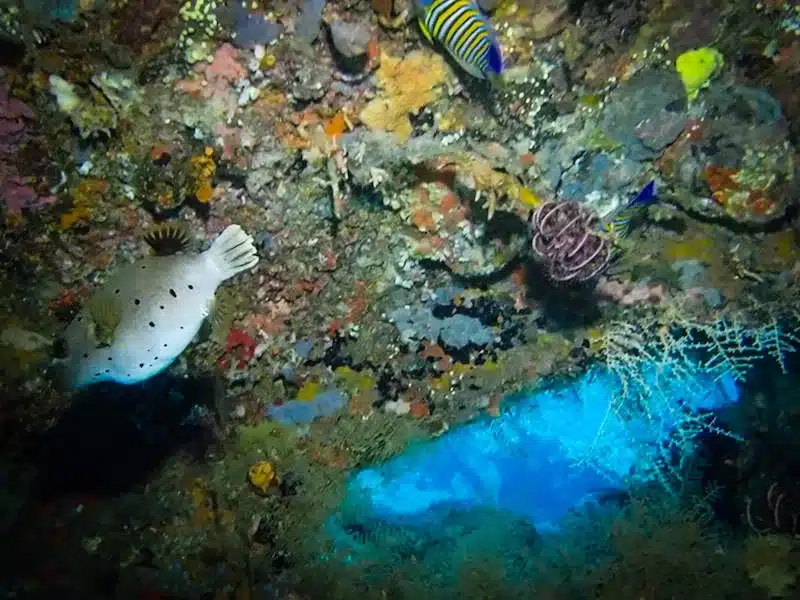The most famous of all of Bali’s dive sites, the USAT Liberty Wreck is an incredible shipwreck dive that’s hard to beat anywhere in the world.
In fact, most people would probably say it’s one of the top shipwreck dives in the world, and I’d agree.
It’s certainly one of the most accessible wreck dives, but that doesn’t mean it doesn’t reward you like a more far-off locale might.
Originally hit by a torpedo from a Japanese submarine in January 1942 during World War II, the USAT Liberty Shipwreck was actually first washed ashore.
It stood on Tulamben Beach for more than two decades, until the eruption of Mount Agung in 1963.
That volcanic eruption resulted in the cargo ship slipping off the beach and onto the sandy slopes, where you can now dive and visit it now.
The fact that the USAT Liberty was first on the shore before eventually falling into Tulamben Bay is what makes it a great dive for beginner divers.
There’s so much to see in the shallows!

Fun Fact: The USAT Liberty Wreck is often mistakenly referred to at the USS Liberty Wreck, but that designation is reserved for US Navy ships. This was actually an Army ship, so the USAT stands for United States Army Transport.
It was transporting railway parts from Australia to the Philippines on behalf of the US Army when it was sunk.
While many wreck dives have a pretty intense dive profile, the USAT Liberty is actually rather shallow in parts.
This makes it a great choice for fun dives who only have their Open Water Certification, though there’s plenty to see at 30 meters deep if you have your Advanced Open Water cert, too.
Quick Facts on the USAT Liberty Wreck Dive Site
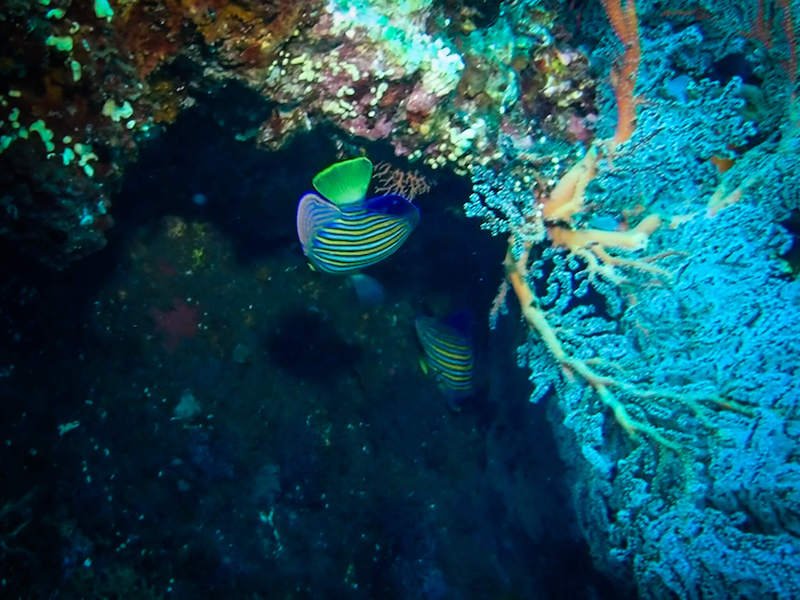
The wreck is 130 meters long (427 feet), making it a massive area to explore — you could easily do multiple dives here and never see everything, and it’d be impossible be get bored.
The shallowest portion of the wreck is only at 5 meters / 16 feet deep (hello, world’s best safety stop?).
Yet the deeper parts are about 30 meters (99 feet) deep, meaning that for those advanced divers who want to dive deep, you absolutely can!
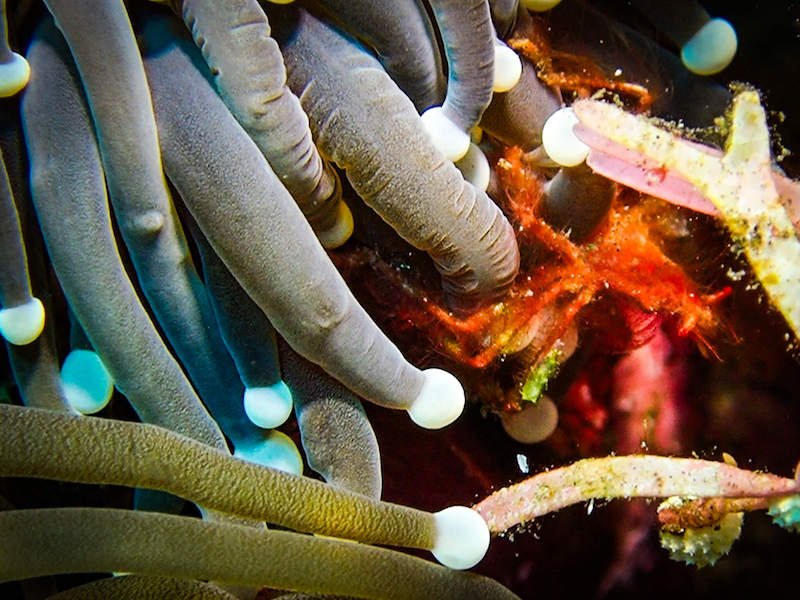
If you prefer to stay shallower, you absolutely can — just make a dive. plan with your divemaster first.
Staying shallow can be a good choice for two reasons.
One reason is because you have only your open water, which allows you to go as deep as 18 meters/60 feet as your maximum depth.
Another reason might be because your air consumption is not so great and shallower dives tend to be more your speed.

That’s why it’s one of the most popular wreck dives in the world: because it offers something for all levels of divers: even the shallowest part of the wreck is incredibly interesting.
Don’t overlook the shallow, sandy portion of the dive if you’re interested in miniature marine life!
This area is also known for its “muck diving”, where you can find tiny critters in the sand.
There’s also a coral garden area to the right of the shipwreck (which is a separate dive site I’ll talk a little more about as well).
This is another dive site that scuba divers interested in macro should absolutely explore!
The ship itself is totally coated in bright-colored hard corals and gently-wavering soft corals, like a kaleidoscopic jacket of color and texture — there’s barely any visible metal left at this point!
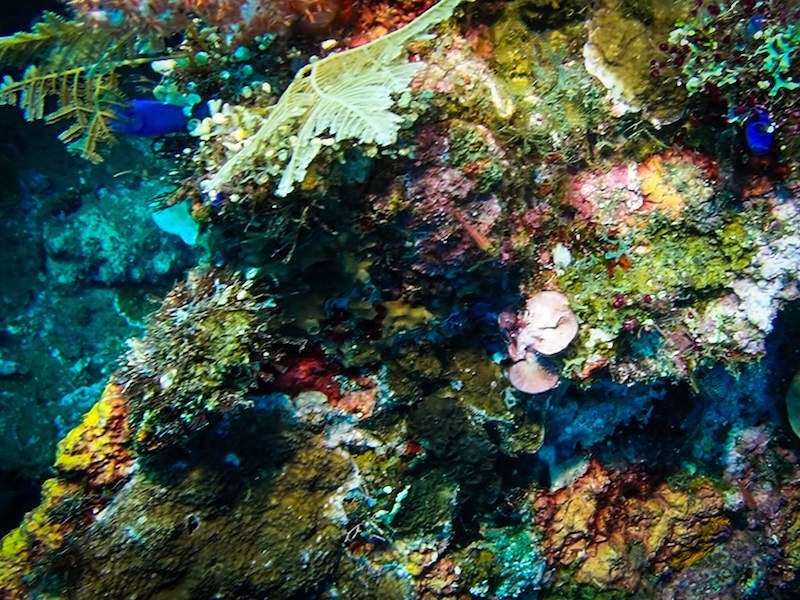

It’s a really short swim from the entry point to the shipwreck, which is great because all your time can be spend exploring the wreck!
The water conditions are really calm: the water temperature is around 29°C / 84 °F much of the year.
Generally Bali water temperatures don’t vary too much throughout the year, and stay at a comfortable temperature of 27°-30°C year round.
I was comfortable in a 3mm full wetsuit, and I tend to run cold (when I dive in the Caribbean like Cozumel and Roatan, I usually wear a 5mm wetsuit!)
The clear water has great visibility, though there is the potential for a little bit of thermocline which can cause some distortions in the water visibility.
I noticed this when entering the water and briefly wondered if something was up with my mask! It also happened at another nearby dive site, Tulamben Drop Off.
My Experience Diving the USAT Liberty Wreck
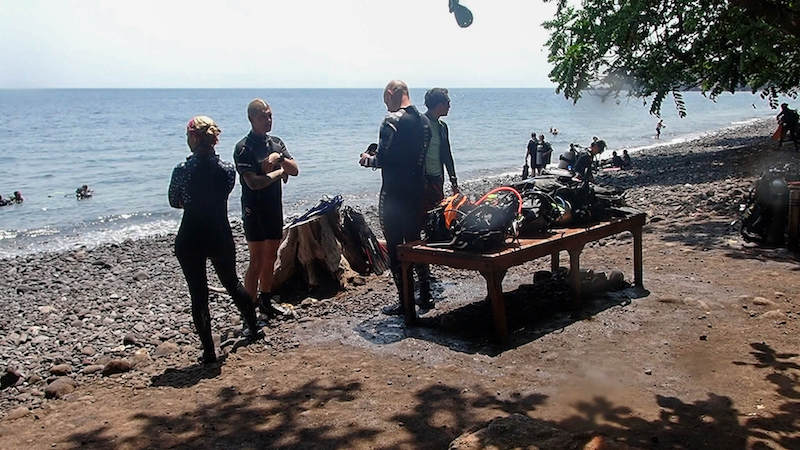
The USAT Liberty Wreck is a really popular dive site, and therefore, it’s always a little crowded.
If you’re not staying in Tulamben, but rather basing yourself in Amed like I was and visiting as a day trip (since it’s only a 30-minute drive), you can go early in the morning or late at night to try to beat the crowds.
Bonus: If you go in the afternoon, you could always stay and do a night dive, too!
Personally though, I didn’t find it to be too crowded to be enjoyable. While yes, I often saw other groups of divers, I actually liked that, as it gave me a sense of the immense scale of the shipwreck.
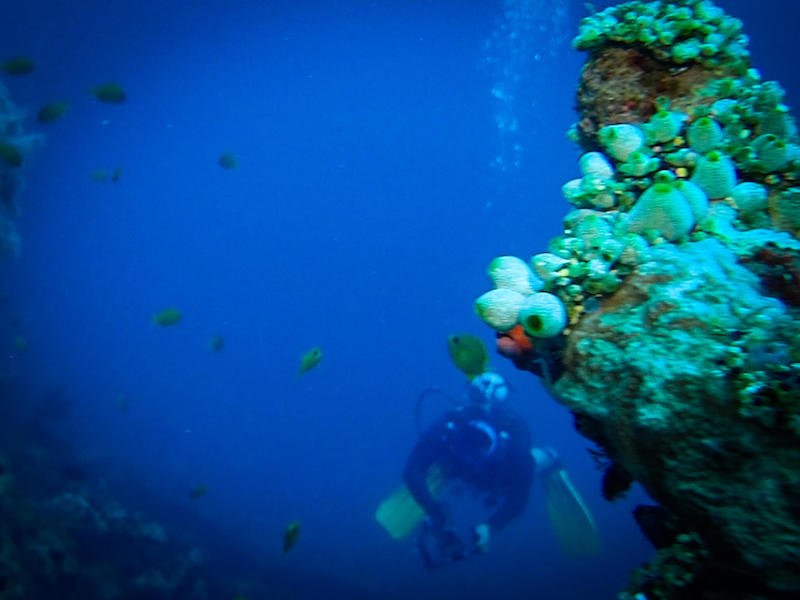
I think a large part of the reason why I liked diving the wreck despite the crowds of at Bali’s most famous dive site was because of the dive center I chose to dive with.
I went with White Sand Divers, who I did all my scuba diving in the Amed/Tulamben area with.
Every time I dove with them, I had my own divemaster to go with — the same awesome one each time, shout out to Nyumen!
It was great as we got to build a rapport and he learned more about what I was interested in seeing and tailored his recommendations for where and how we dove accordingly.
Even on the day we dove the USAT Liberty, there were just two of us — both solo travelers — and rather than giving us just one divemaster and making us a group of three, they each had us have our own dive master.
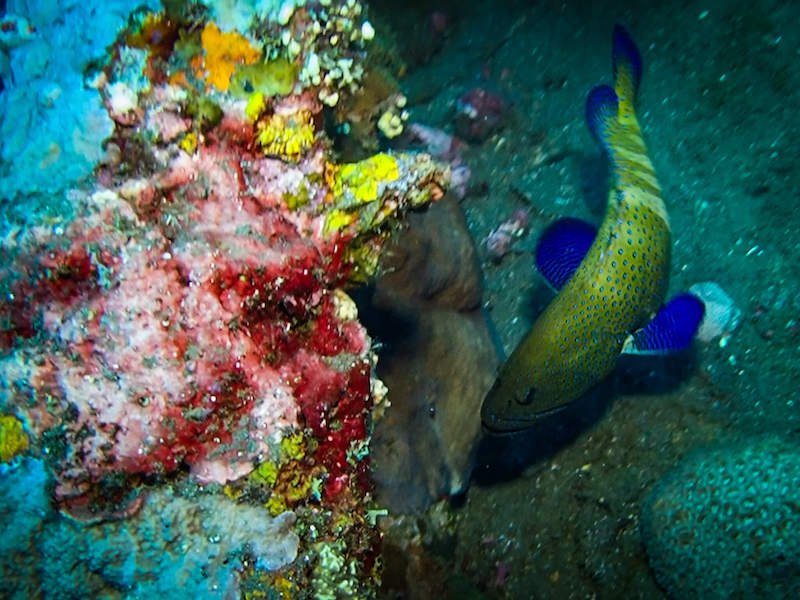
That really made the experience all the more special to me!
While I can’t guarantee you’ll get a private divemaster without paying for one, I will note that in my personal experience diving with White Sand Divers in November, all my dives were individual dives.
We dove the sandy area and took our time enjoying all the incredible nudibranchs my divemaster spotted.
I was grateful for his patience in letting me photograph and video each one!

Once we finished in the sandy area, we reached the shallower point of the shipwreck, and we swam in and around it, admiring it from all sorts of angles.
My divemaster kept a keen eye out for macro critters and other great photography subjects.
My favorites he spotted were a gorgeous orangutan crab, as well as the tiniest patch of neon green bubble tip anemone with the most insanely photogenic clownfish I’ve ever seen!

I didn’t see any of the larger life that can be spotted here, like moray eels, sea turtles, and bumphead parrotfish, but I did see so many incredible nudibranchs, gobies, plenty of soft corals, and other incredible things.
It’s hard to believe that all of this is located just a few steps from the beach… it’s definitely on my list of best shore dives, hands-down!
My Dive Profile for the USAT Liberty Shipwreck

I did two dives at the USAT Liberty site: one of the wreck of the USAT Liberty itself and one of the muck diving and coral gardens in the surrounding area.
Access to the USAT Liberty Shipwreck is by shore — it’s very easy shore entry and exit, although I will note the rocks are a little hard to walk on mostly due to their size and shape (large and round).
On my second dive, when exiting the water, I slipped a little on the loose rock and hurt my knee a bit.
Be careful when walking on the rocky beach — it’s very easy to lose your footing, especially with all your dive gear on!
Other than that though, I think it’s a very easy dive all things considered (and I’ve logged more than 80 at this point!)
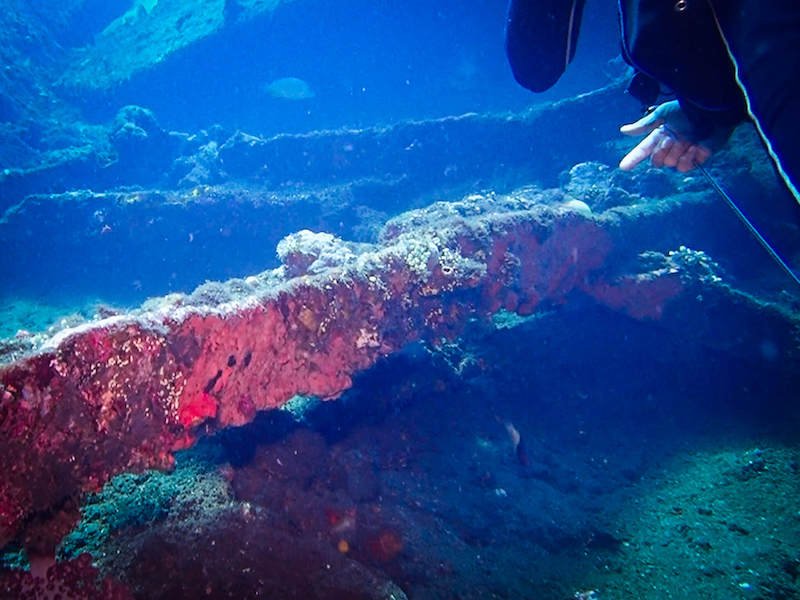
For the first dive, we dove to a maximum depth of 24 meters (79 feet) and our dive lasted 55 minutes.
We enjoyed a leisurely hourlong surface interval, having some hot tea, water, and chatting about what we saw on the dive.
For the next dive, we chose to dive the other dive site, Coral Garden, for its muck area and coral gardens.
That’s because I’m particularly interested in macrophotography, specifically of nudibranchs and other small species, like the pygmy seahorse, etc.
However, most dive shops will likely have you dive the USAT Liberty another time, and explore a different part of it — it truly is so massive that you won’t get bored with a second dive there.
For my second dive, we dove to a maximum depth of 20 meters (66 feet) and our dive lasted 66 minutes.
Rare and Unique Species You Might See at the USAT Liberty Wreck
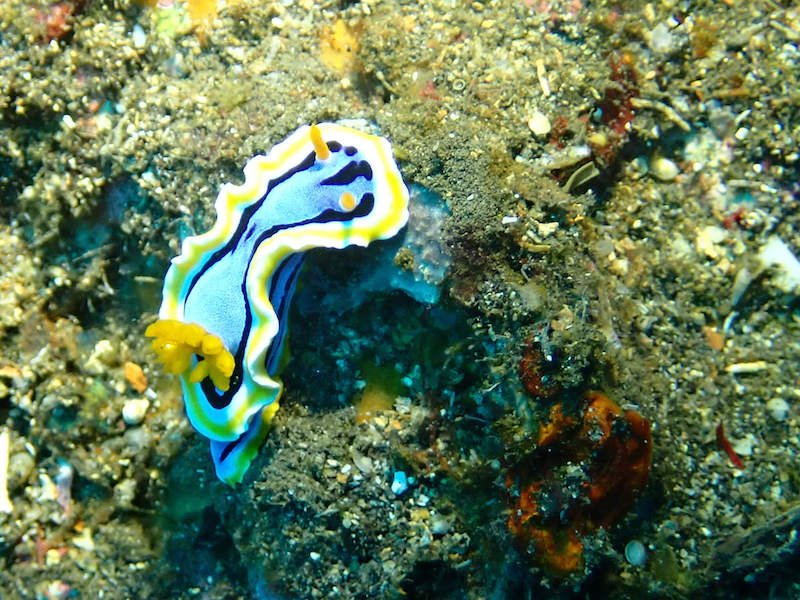
There is a truly uncountable number of species of fish, crustaceans, nudibranchs, etc. you might see while diving the USAT Liberty.
I won’t bore you with all of them, even though I’m essentially a walking encyclopedia these days!
Here are a few really special things you might see:
- ornate ghost pipefish, which have a lacy, frilly texture and look somewhat similar to a seahorse, and come in shades of white, reddish, and black.
- garden eels, which almost look like wavering sea grass on the sandy bottom… until you realize it’s an entire field of eels!
- ribbon eels, which are one of the rarest and most unique eels in the world! (I saw one on the second dive, a bit away from the main wreck area)
- pygmy seahorse, which you might find in the sea fans if you look very closely — their camouflage is out of this world!
- orangutan crabs, which look just like extremely miniature versions of their land namesake, and like to hide in sea anemones
Allison Green is a former educator turned travel blogger. She holds a Masters in Teaching and a B.A. in English and Creative Writing. Her blog posts merge her educational background and her experience traveling to 70+ countries to encourage responsible, enriching travel. She has been a speaker at the World Travel Writers Conference and her writing, photography, and podcasting work has appeared in National Geographic, CNN Arabic, CBC Canada, and Forbes, amongst others. Now a full-time traveler, she has lived in Prague, Sofia, New York City, and the San Francisco Bay Area.
